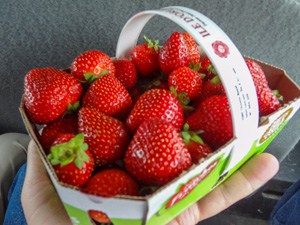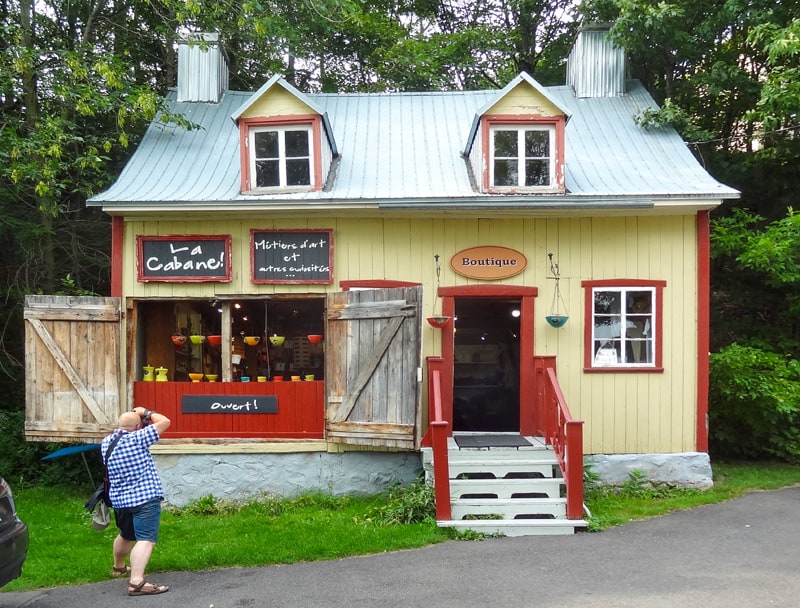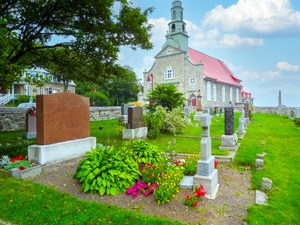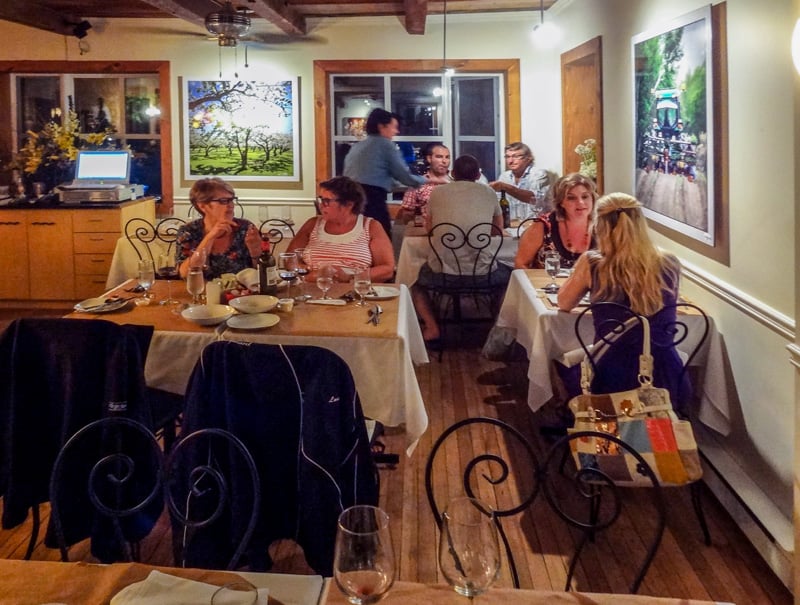Last Updated on April 4, 2024

Estimated reading time: 6 minutes
By Jim Ferri
It’s a wonder that places such as Ile d’Orleans still exist.
Ile d’Orleans is a bucolic 22-mile-long island only 15 minutes outside of Quebec. Visit it, and you’ll feel you’re in another time, thanks to it being declared a historic district to preserve its unique identity.
Today, Ile d’Orleans is still a land of woodlands, farmland, and the occasional vineyard. There are still only six small villages, just as it has been for hundreds of years.
Each of the historic villages retains its centuries-old identity, with some buildings dating back to the 17th century. Given its location so near a major tourist city, it’s a tranquil place that, quite miraculously, isn’t overrun with tourists.
An added bonus is that Ile d’Orleans is also an excellent place for foodies, as much food is sourced locally. But, of course, it’s also fantastic for the rest of us who just love a good meal.

Ile d’Orleans: Quebec’s Time Capsule
It was August when we crossed the mile-long Pont de l‘Île, the nearly 90-year-old suspension bridge that connects Ile d’Orleans to the mainland. We had driven here on a day trip after visiting Quebec City.

Once on the island, we found a living time capsule of sorts, not a place where people dress in Old-World costumes for tourists, but an actual working community where people have held onto their regional identity. Old island houses – some from the early- to mid-19th century – and old churches in the region remain, and 90% of the island remains farmland.
All over Ile d’Orleans, you find sugar maple groves; pear, plum, and apple orchards; strawberry fields, and little farm stands along the ribbon of road that encircles the island.
In one area where small vineyards run across the hillsides, we visited Vignoble Ste-Pétronille. The Ile d’Orleans winery and cidery was the final stop for a group of bicyclists. On a terrace overlooking the vineyards, they were relaxing with wine and cheese . Out front, their tour driver was placing their bikes in racks atop the van for the ride back to Quebec.
A nearby farm stand, its outdoor shelves filled with small take-away containers of blueberries, strawberries, and raspberries, was also doing a good business.
Ile d’Orleans, One of the First French Settlements
The island was discovered by explorer Jacques Cartier in 1535, about the same time that the site of present-day Quebec City was found. It was one of the first French settlements in the area, and at one time, its fertile soil sustained a population more significant than that of Quebec City.
River pilots who navigated the St. Lawrence were the Ile d’Orleans’s primary residents until relatively recently. They left their mark on the wrought-iron railings of the Quebec-style houses along the streets in small villages such as St. Jean, where the circles on the balustrades symbolize the pilot wheels on ships they piloted on the river.

Ile d’Orleans: Quebec Sans Starbucks
Route 368, the Chemin Royal (Royal Road) that encircles the island, is the perfect route to discover the countryside either by car or bicycle or by foot. You don’t find 7-11’s, Starbucks, or strip malls along the way, just the solitude and a landscape that’s a slice of traditional life on Ile d’Orleans.

In St. Jean, we found houses built with creamy-yellow bricks brought up the St. Lawrence as ballast in ships long ago, with many sitting so close to the street I’m sure they predated it. Quiet little shops were scattered here and there, all not far from Église Saint-Jean de Ile d’Orleans. The stone Catholic church, built from 1734 to 1737, has stood the test of time well and is worth a quick visit.
Not far beyond, I found a man in a garden relaxing in an Adirondack, reading a book. There was nothing around him but flowers, nothing in the air but solitude.
In Ile d’Orleans, all along the Chemin Royal old village lampposts carry signs relating to local history. Very local. Leaving the man in the garden to enjoy his book, I came across a lamppost dedicated to a priest who opened the church’s grounds for skating, hockey, and other activities.

A “Cabane à Sucre”
Inside its little shop, a variety of maple products from Ile d’Orleans – including maple butter, maple green tea, maple cream cookies, and maple syrup – were for sale, and the syrup turned out to be the best I’ve had anywhere. Somehow, I wasn’t surprised to learn that the place had been in the family for ten generations.
After leaving L’En-Tailleur, we stopped for dinner at the nearby Auberge la Grange de l’ile. The countryside inn was a wonderful little place set amid the verdant fields of Ile d’Orleans.
Our Ile d’Orleans dinner was Magnifique and, better yet, less than a half-hour from table to bed in our hotel in Quebec City.
You may also enjoy: A Tour of Quebec City, Canada’s Old World Treasure / Eastern Townships of Quebec – a Ski Holiday / A Bike Tour of Quebec’s Eastern Townships
If You Go:
Île d’Orléans Tourism
490, côte du Pont
Saint-Pierre-de-L’Île-d’Orléans,
Québec G0A 4E0, Canada
https://tourisme.iledorleans.com/en
[email protected]
Tel: (866) 941-9411
Quebec City Tourism
Infotouriste Centre
12 rue Saint-Anne
Québec, QC, G1R 3X2
Tel: (877) 266-5687)
https://www.quebec-cite.com/en
Auberge la Grange de l’ile
517 Chemin du Carrefour
Saint-Pierre-de-l’Île-d’Orléans
Quebec G0A 4E0, Canada
lagrangedelile.com
[email protected]
Tel: 418-828-9926
L’En-Tailleur
1447 Chemin Royal
Saint-Pierre-de-l’Île-d’Orléans
QC G0A 4E0, Canada
Tel:+ (418) 828-1269
www.entailleur.com/
Vignoble Ste-Pétronille
8705 Chemin Royal
Sainte-Pétronille
Quebec G0A 4C0, Canada
https://vs-p.ca/
Tel: (418) 828-9554

I am trying to find out about a restaurant I haven eaten at many years ago (possibly the early 70s). It was an old farmhouse, with family style meals. The food was cooked over the fire in the hearth, and they served soups, stews, salads, breads and pies. One dessert I remember was sugar pie.
Hi Robert, I can’t help you with that. Why don’t you contact the folks at Quebec Tourism, since they may be able to help you. You’ll find them here: https://www.bonjourquebec.com/en-us
Probably La Grange. But it has changed! Still very good!
Hi Susan,
I believe it was La Grange.
Jim